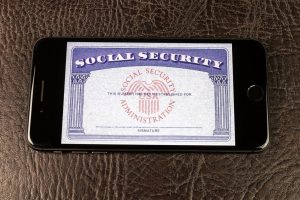Definition
The Educational Assistance Program, also known as the GI Bill, is a U.S. Department of Veterans Affairs (VA) program that provides financial assistance for veterans, service members, and their families to pursue education and training opportunities. The program covers expenses related to tuition, housing, books, and supplies for attending college, university, vocational, or on-the-job training. It is designed to support those who served in the military to achieve their educational goals and smoothly transition into the civilian workforce.
Key Takeaways
- The Educational Assistance Program (EAP) is a VA benefit designed to support veterans, active duty service members, and their qualified family members in furthering their education and career goals.
- EAP provides financial assistance for tuition, fees, books, and supplies to eligible individuals enrolled in approved educational and training programs, which can include higher education, vocational and technical training, and apprenticeships.
- Some common programs under EAP are the Post-9/11 GI Bill, Montgomery GI Bill, and the Survivors’ and Dependents’ Educational Assistance (DEA) Program, each with their specific eligibility criteria and benefits.
Importance
The VA benefits term: Educational Assistance Program is important because it provides vital financial support and resources to eligible veterans, active-duty service members, and their families in pursuing higher education, vocational training, or other career-enhancing programs.
By offering a range of benefits, including tuition assistance, housing allowances, and stipends for books, this program aims to increase access to quality education, promote career advancement, and improve the overall quality of life for those who have selflessly served their country.
Recognizing the value of education in the transition from military to civilian life, the Educational Assistance Program plays a significant role in empowering and equipping individuals with the skills and knowledge they need to achieve long-term success and contribute positively to their communities.
Explanation
The purpose of the Educational Assistance Program (EAP) under VA benefits is to provide eligible veterans, service members, and their dependents with financial assistance to support their pursuit of higher education, vocational training, and other educational programs. This support aims to enhance their post-military career opportunities, promote their personal and professional development, and ease the transition from military to civilian life.
The EAP acknowledges the vital contributions made by veterans and recognizes the importance of investing in their education as they return to civilian life. The EAP is utilized by offering a variety of financial support programs designed to cater to a wide range of educational needs and situations.
These programs include the Post-9/11 GI Bill, Montgomery GI Bill, and Vocational Rehabilitation and Employment Services, among others. Beyond covering tuition costs, assistance may also extend to housing, textbooks, and even apprenticeships, depending on the program.
By offering these financial benefits, the VA strives to empower former service members and their loved ones in achieving their academic and career ambitions, ultimately improving their quality of life and fostering their potential to contribute positively to society at large.
Examples of Educational Assistance Program
The VA Benefits term “Educational Assistance Program” refers to a range of programs designed to help veterans, service members, and their families access higher education and vocational training. Here are three real-world examples of educational assistance programs under the VA Benefits:
Post-9/11 GI Bill (Chapter 33): The Post-9/11 GI Bill provides financial support to individuals with at least 90 days of aggregate service on or after September 11, 2001, or those discharged with a service-connected disability after serving for at least 30 consecutive days. This program covers tuition and fees, a monthly housing allowance, and a stipend for books and supplies to help veterans and eligible dependents pursue higher education degrees, vocational training, or other approved programs.
Montgomery GI Bill – Active Duty (Chapter 30): The Montgomery GI Bill offers educational assistance for individuals who served on active duty for at least two years and paid into the program. This benefit can be used for college programs, technical or vocational courses, flight training, and other programs related to the pursuit of academic or professional development. Eligible participants receive a monthly benefit amount, which varies depending on the type of educational program and the individual’s length of service.
Survivors’ and Dependents’ Educational Assistance Program (Chapter 35): The DEA program offers educational assistance to spouses and dependents of veterans who have died or are permanently and totally disabled due to a service-related condition, or those who are missing in action, captured, or forcibly detained. These benefits can be used for degree and certificate programs, apprenticeships, or on-the-job training. Beneficiaries receive a monthly allowance based on the type of program and duration of their educational endeavor.
FAQ: VA Educational Assistance Program
1. What is the VA Educational Assistance Program?
The VA Educational Assistance Program, also known as the GI Bill, is a benefit provided by the U.S. Department of Veterans Affairs that helps eligible veterans, service members, and their families cover the costs of education and training programs.
2. Who is eligible for the VA Educational Assistance Program?
Eligibility for the VA Educational Assistance Program depends on your specific circumstance, such as your length of service, duty status, and service-related disability. Generally, individuals may be eligible if they served on active duty after September 10, 2001, or if they’re the spouse or dependent of a qualifying veteran.
3. What types of educational programs are covered by the VA Educational Assistance Program?
The program covers a wide range of educational and training opportunities, including undergraduate and graduate degree programs, vocational and technical training, on-the-job training, and apprenticeships. It can also cover certain licensing and certification fees, as well as tutoring assistance and entrepreneurship training.
4. How do I apply for the VA Educational Assistance Program benefits?
To apply, visit the Veterans Affairs website and complete the online application (VA Form 22-1990) or obtain a paper copy of the form and submit it through mail. You may also apply in person at a VA regional office, or work with a VA-approved education or training facility to help with the application process.
5. How long do I have to use my VA Educational Assistance Program benefits?
For most programs, you have 15 years from the date of your last period of active duty lasting at least 90 consecutive days to use your benefits. However, some benefit programs may have different timeframes for using the benefits. It’s important to check specific details regarding the benefit program you’re eligible for.
Related VA Benefit Terms
- Post-9/11 GI Bill
- Montgomery GI Bill
- Yellow Ribbon Program
- Vocational Rehabilitation and Employment (VR&E)
- Survivors’ and Dependents’ Educational Assistance (DEA) Program
Sources for More Information
- U.S. Department of Veterans Affairs – Education and Training
- GI Bill – Education and Training Benefits from Veterans Affairs
- Military.com – GI Bill (Educational Assistance Program)
- Vets.gov – Access VA education benefits
 Benefits.com Advisors
Benefits.com Advisors
With expertise spanning local, state, and federal benefit programs, our team is dedicated to guiding individuals towards the perfect program tailored to their unique circumstances.
Rise to the top with Peak Benefits!
Join our Peak Benefits Newsletter for the latest news, resources, and offers on all things government benefits.




















